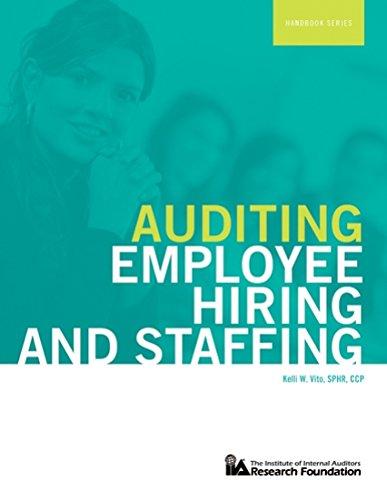Question
Q1: Laval produces lamps and home lighting fixtures. Its most popular product is a brushed aluminum desk lamp. This lamp is made from components shaped
Q1: Laval produces lamps and home lighting fixtures. Its most popular product is a brushed aluminum desk lamp. This lamp is made from components shaped in the fabricating department and assembled in the assembly department. Information related to the 25,000 desk lamps produced annually follows





Q2: Way Cool produces two different models of air conditioners. The company produces the mechanical systems in its components department. The mechanical systems are combined with the housing assembly in its finishing department. The activities, costs, and drivers associated with these two manufacturing processes and the production support process follow. (Loss amounts should be indicated with a minus sign. Round your intermediate calculations and round "Cost per unit and OH rate" answers to 2 decimal places.)


Laval produces lamps and home lighting fixtures. Its most popular product is a brushed aluminum desk lamp. This lamp is made from components shaped in the fabricating department and assembled in the assembly department. Information related to the 25.000 desk lamps produced annually follows. $275,88e Direct materials Direct labor Fabricating department (8,698 DLH * $31 per DLH) Assembly department (15,800 DLH $25 per DLH) Machine hours Fabricating department Assembly department $248,888 $395,000 14,800 MM 29,650 MH Expected overhead cost and related data for the two production departments follow. Fabricating Assembly Direct labor hours 200,eee DLH 299,00 DLH Machine hours 167,00 MH 131,000 MH Overhead cost $310, Bee $435,082 Required 1. Determine the plantwide overhead rate for Laval using direct labor hours as a base. 2. Determine the total manufacturing cost per unit for the aluminum desk lamp using the plantwide overhead rate. 3. Compute departmental overhead rates based on machine hours in the fabricating department and direct labor hours in the assembly department 4. Use departmental overhead rates from requirement 3 to determine the total manufacturing cost per unit for the aluminum desk lamps. Required 1 Required 2 Required 3 Required 4 Determine the plantwide overhead rate for Laval using direct labor hours as a base. Required 1 Required 2 Required 3 Required 4 Determine the total manufacturing cost per unit for the aluminum desk lamp using the plantwide overhead rate 0 Total manufacturing costs Units produced Manufacturing cost per unit Required 1 Required 2 Required 3 Required 4 Compute departmental overhead rates based on machine hours in the fabricating department and direct labor hours in the assembly department. (Round your answers to 2 decimal places.) Departmental overhead rate Fabricating Assembly MH DLH Required 1 Required 2 Required 3 Required 4 Use departmental overhead rates from requirement 3 to determine the total manufacturing cost per unit for the aluminum desk lamps. Direct labor 0 Overhead 0 S 0 o per unit Way Cool produces two different models of alr conditioners. The company produces the mechanical systems in its components department. The mechanical systems are combined with the housing assembly in its finishing department. The activities, costs, ar drivers associated with these two manufacturing processes and the production support process follow. (Loss amounts should be Indicated with a minus sign. Round your Intermediate calculations and round "Cost per unit and OH rate" answers to 2 decim places.) Process Activity Components Changeover Machining Setups Driver Number of batches Machine hours Number of setups Quantity 770 7,580 Finishing Welding Inspecting Rework Overhead Cost $ 454, eee 382,800 227,500 $ 983,588 $ 181,200 234, eee 61,888 $ 476,200 $ 137,500 30, 20e 68,128 $ 227,828 Welding hours Number of inspections Rework orders 5,180 810 160 Support Purchasing Providing space Providing utilities Purchase orders Number of units Number of units 533 4,808 4,800 Additional production Information concerning its two product lines follows. Units produced Welding hours Batches Number of inspections Machine hours Setups Rework orders Purchase orders Model 145 1,600 1,808 385 490 2,28e 30 100 355 Model 212 3,200 3,380 385 320 5,388 30 60 178 1. Using a plantwide overhead rate based on machine hours, compute the overhead cost per unit for each product line. 0 2. Determine the total cost per unit for each product line if the direct labor and direct materials costs per unit are $240 for Model 145 and $130 for Model 212. Activity Driver Plantwide OH rate Units Produced OH Cost per unit Overhead Assigned Model 145 Total Overhead Cost S 0 Model 212 $ 0 Model 145 Model 212 0 3. If the market price for Model 145 is $746 and the market price for Model 212 is $440, determine the profit or loss per unit for each model Model 145 Model 212 Market price
Step by Step Solution
There are 3 Steps involved in it
Step: 1

Get Instant Access to Expert-Tailored Solutions
See step-by-step solutions with expert insights and AI powered tools for academic success
Step: 2

Step: 3

Ace Your Homework with AI
Get the answers you need in no time with our AI-driven, step-by-step assistance
Get Started


